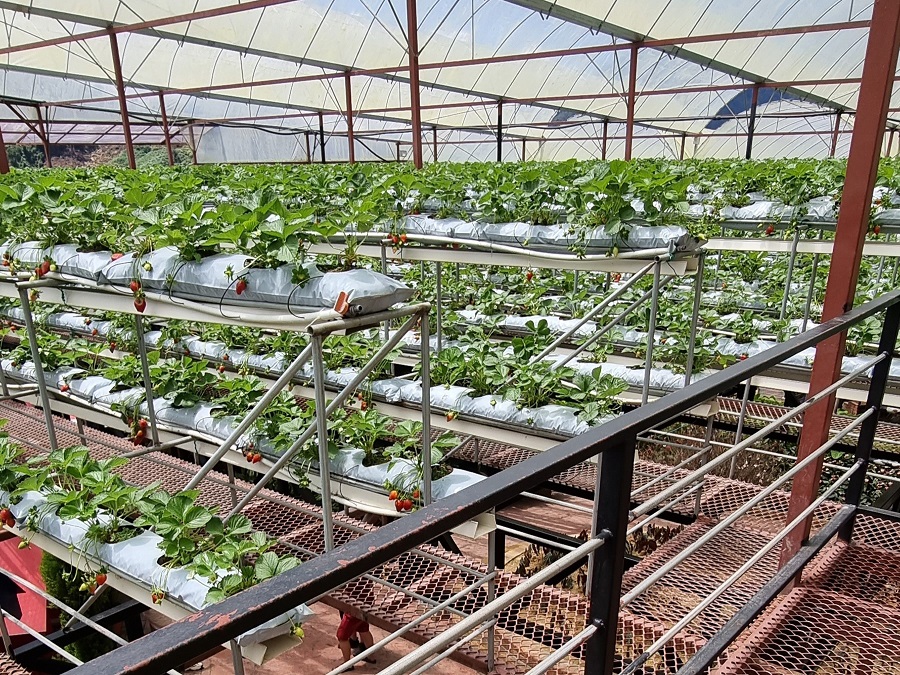Recently, vertical farming has been growing in popularity among small-scale, urban farmers looking to maximise crop yields within a constricted space while maintaining the quality of produce. The vertical farming technique has the potential to reduce water and land use drastically, which has sparked conversation in larger agricultural circles. The question is, can this concept be realistically applied on a larger scale to increase profits while reducing the environmental impact of farming? If the answer is yes, then what is the hold-up?
First, some context. 70 per cent of water usage worldwide can be attributed to agricultural irrigation and according to a recent study, between 90 to 99 per cent of deforestation in the tropics is agriculture driven. As resources become more and more limited, it has become increasingly clear that conventional farming will not be sustainable. Here is where vertical farming comes in.

The concept entails stacking produce while it grows to maximise space usage and crop yield while minimising resources used. This technique has the potential to decrease land and water use drastically, using 70 to 95 per cent less water and over 90 per cent less land. This would mean less water use and deforestation in the name of agriculture. With that, local ecosystems can be rehabilitated to foster biodiversity and endangered species can thrive without threat of habitat loss.
This technique does not just prove its merits for being environmentally sound, it can also be extremely profitable and efficient. Vertical farming can achieve up to 10 times the yield for certain crops. On a larger scale, the economies of scale would further increase profit margins. It is also not affected by adverse weather conditions or natural disasters such as flooding which eliminates the main cause for crop loss among farmers.
That being said, there are still some issues. With large-scale technology mostly still in development, it is not feasible for seasoned farmers to completely overhaul their farm’s systems when they are not sure if it is sustainable for their operation, despite the prospects of profit multiple times over. Coupled with the lack of expertise in the emerging technology, it is difficult for one to be sure the lighting, pH value and water irrigation systems will yield healthy crops that are up to import standards. For many farmers, trial and error is not a viable option as they must produce consistently to meet their targets.
Even for those willing to take the jump, it is not unreasonable to say that a big hurdle is also the initial investment required. Despite the lucrative prospects, a considerable amount of investment will have to go into purchasing the equipment. Investments will also have to go into retraining and upskilling existing workers to be able to navigate the new systems or committing to new technology for automation.
An alternative would be to incentivise the younger generation of agricultural entrepreneurs to build their farms with vertical farming in place from the get-go. This could reduce further deforestation as existing industrial or commercial farming can be utilised. For example, shipping containers and mine shafts have been turned into vertical farms.
By drastically reducing the use of land and water, there is potential to open new trade markets where consumers value sustainability and environmental stewardship, such as the European Union (EU) which is imposing increasingly stringent regulations on imports. This could cause a significant economic boom and address youth unemployment rates.
However, for this to become a reality, significant research and development must be poured into vertical farming. The importance of having a resilient agricultural infrastructure which can thrive despite erratic weather and natural disasters such as floods cannot be overstated. Once the initial hurdles have been overcome, the preparedness this farming technique can provide could be a saving grace a few years down the line. Not to mention the economic impact of the boost in profits from the agricultural sector due to increased efficiency and economies of scale.
Overall, if the cards are played right, this farming technique has the potential to holistically revolutionise the future of farming by increasing profits, decreasing environmental impact, and safeguarding food supplies for the coming years. ![]()

